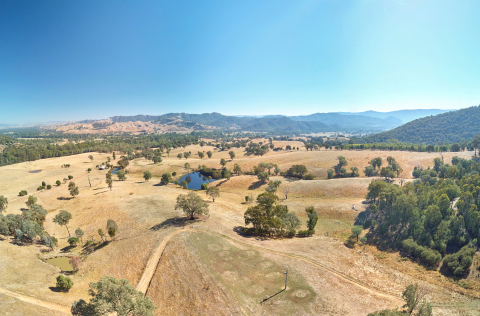
A revamped Victorian Government emergency services levy is set to rip $140 million from rural communities annually according to a new analysis, prompting urgent calls for the tax to be scaled back.
The new Emergency Services and Volunteer Fund represents a 150% tax hike on some rural landholders, when compared to the Fire Services Levy it is designed to replace. This is despite a complete lack of guarantees regarding how (or where) the new money will be spent.
"This new levy is dreadfully unfair. It's going to smash farm budgets, hurt local businesses and cause job losses in our towns and communities," RCV Chair Cr Rob Amos warned.
"Every extra dollar we send to Spring Steet is a dollar that can't be spent in a local business or used to pay an employee."
Aside from the weather, financial stress is already the leading driver of poor farmer mental health.
"Everybody agrees our emergency services need a boost."
"This new levy will hit Victorian farmers the hardest. How does that make any sense after years of drought and amid a cost-of-living crisis?" Cr Amos said.
"At the very least this new tax burden should be shared equally amongst all Victorian landholders."
View a detailed analysis of ESVF levy impacts(PDF, 188KB)
RCV is also concerned by the Victorian Government's refusal to guarantee that money raised by the levy will only be spent on local CFA and SES crews, equipment and infrastructure.
Rural Councils Victoria has written to the Victorian Treasurer, Jaclyn Symes, sharing this new analysis and raising its concerns. We look forward to sitting down with the Treasurer to ensure she's aware of the impact the ESVF will have on Victoria's farmers and rural communities.
Other concerns RCV holds about this new levy include:
- Rural councils will be required to collect this new annual levy through rates notices and then pass the money onto the state. However, forcing local governments to collect a Victorian Government tax is unfair. The State Revenue Office exists for this exact purpose and should be the vehicle for collection.
- There's nothing to stop the Victorian Government increasing the levy in the future. This contrasts with local councils, which have been subject to a rate cape of 2.38% (average over 10 years). The rate cap is essentially a cap on council funding for local services and infrastructure. Either way, the new levy should be capped also, or subject only to scheduled increases.
- The Victorian Government says CFA and SES volunteers will be exempt from the new ESVF levy. But this is only partially true, as the exemption will only apply to one rateable property. Most farmers hold the title for numerous rateable properties and will therefore still be required to pay a significant fee.
"The Emergency Services Volunteer Fund levy isn't scheduled to come into force until July," Cr Amos said.
"There's still time for the Victorian Government to acknowledge the inequities and unforeseen consequences of this new levy and make changes."
Statement from Murrindindi Shire Council:
Council recognises the critical role that emergency services play in protecting our communities and the importance of ensuring they are adequately funded. However, we are deeply concerned about the financial impact of the new Emergency Services and Volunteers Fund (ESVF) on our rural and regional ratepayers, as well as the additional burden placed on councils to collect this levy on behalf of the State Government.
Council is closely monitoring the issue and engaging with the Municipal Association of Victoria (MAV), Rural Council's Victoria (RCV) and other councils to advocate for a fairer approach. We will continue to raise the impact on farming and commercial ratepayers in our discussions with the State Government.
Rural Councils Victoria first published this release. Murrindindi Shire Council is represented on the RCV committee.






